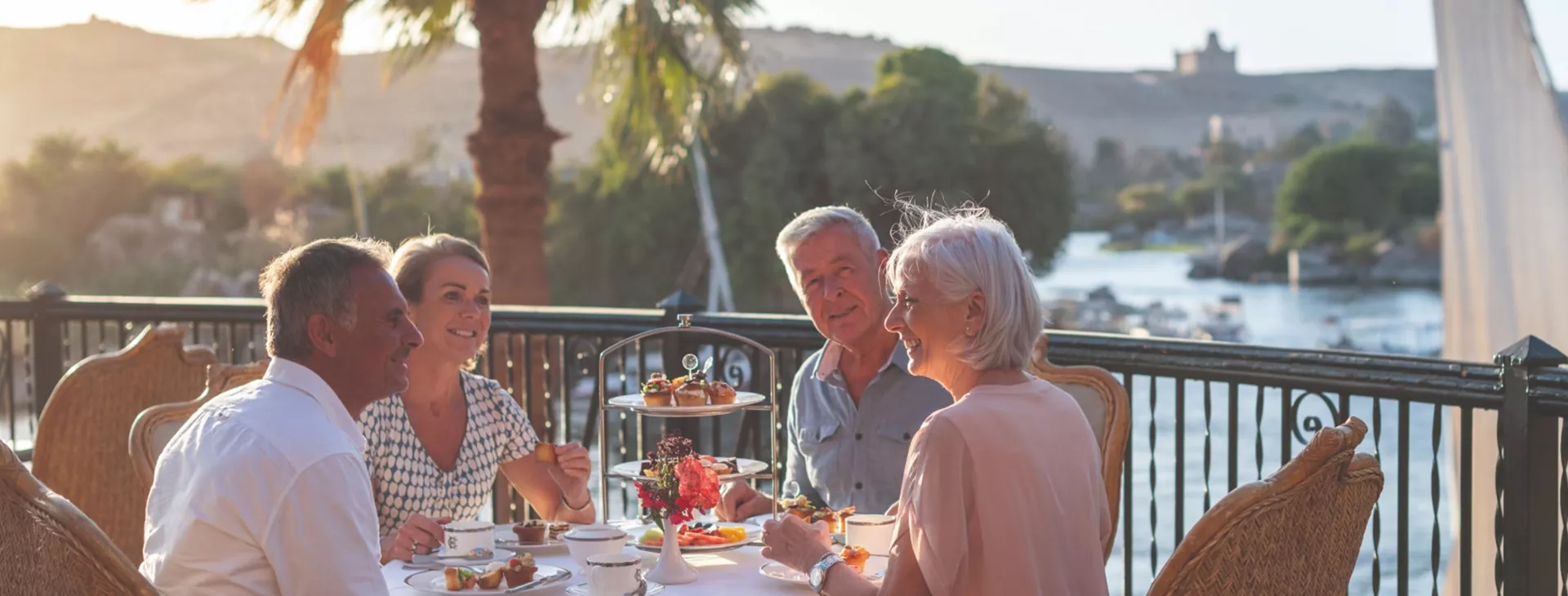
United States
© Luxury Gold 2024. All Rights Reserved.
Curated Experiences
Magnificent Stays
Exceptional Dining
Experience Egypt like never before with our small group tours and dedicated Travel Concierge.
11 DAYS
The father of African rivers the Nile has long been a reflection of Egypt’s history and destiny – an economic lifeline, a great highway to conquest and a source of inspiration throughout the centuries.
Visiting one of the Seven Wonders of the Ancient World, the Great Pyramids at Giza and their guardian Sphinx, is a once-in-a-lifetime experience that simply must be on the sightseeing list for Cairo. Also in Cairo is: the Citadel of Salah El Din - a massive 12th century compound that was home to Egypt's rulers for more than seven hundred years; the sublime Alabaster Mosque of Mohammed Ali, with its highly ornate interior; and the Egyptian Museum, housing the priceless treasures recovered from the tomb of Tutankhamun.
At night, Cairo’s breathtaking Sound & Light show will amaze and dazzle. Nearby, Memphis – the famous capital of ancient Egypt – provides the opportunity to see the colossal statue of Ramses II and the great Alabaster Sphinx. In Sakkara, the Step Pyramid of King Zoser, is the oldest in the world, dating back to 2,700 BC. In the Valley of the Kings, one of the most famous archaeological sites in the world, is the burial place of Tutankhamun, whose mummified remains are still here on display.
The Temple of Hatshepsutis is not to be missed. This sacred site is the final resting place of Egypt's first female pharaoh who ruled from 1,479 to 1,458 BC. Further afield in Luxor, Karnak is the largest temple complex ever built by man, constructed over a period of 1,500 years. Points of interest include the avenue of ram-headed sphinxes, and standing in awe, among the huge columns of the vast Hypostyle Hall. Another marvel is the Temple of Hathor. Built in the 1st century BC, it remains one of the best-preserved temples in all of Egypt and contains a rare depiction of Cleopatra VII and Caesarian, the son of Julius Caesar. A UNESCO World Heritage Site worthy of your attention is the Temple of Luxor. Founded in 1,400 BC during Thebe's Golden Age, it is a stunning sight at sunset.
Venturing down the Nile will bring you to the Colossi of Memnon – the gigantic twin stone statues of Amenhotep III, that once guarded his mortuary temple. Crossing the Nile by motorboat reveals the well-preserved Philae temple complex, moved stone-by-stone to its current location following the construction of the Aswan High Dam. Situated in the centre of Esna, the fascinating and highly decorated Esna Temple is dedicated to Khnum, the ram-headed God of Creation. Witness the majesty of the unique double-temple of Kom Ombo, dedicated to both the crocodile-headed Sobek, and the Falcon God - Horus the Elder. In this sacred place near the riverbank, captive crocodiles were once worshipped in life and mummified after death. Aswan is the location of the High Dam and the ancient Granite Quarries, where one of Queen Hatshepsut's obelisks lies abandoned in the bedrock.
Egyptian cuisine has an endearing simplicity to it, with legumes and vegetables being at the heart of many dishes. Two of the most popular savory dishes are: kushari - an enticing combination of rice, lentils, caramelized onions, chickpeas, pasta and tomato sauce; and ful medames - mashed broad beans with garlic, parsley and lemon juice, often eaten with pitta bread. Buffalo cheese, rice, dips such as baba ghanoush (mashed grilled eggplant mixed with tahini, lemon juice, seasoning and olive oil), kibda (fried liver), stuffed pigeon, manshi (stuffed vegetables), falafel, and kofter (spiced meatballs) are among some of the favorite local cuisine. Delightfully flaky pastry accompanied with honey and chopped nuts are the winning ingredients in creating deliciously sweet baklava. Bouzat haleeb (ice-cream), roz be laban (vanilla rice pudding), umm ali (a hot dessert with layers of bread soaked in milk with raisins), and halawa (sesame paste confectionary) are also much-loved desserts in Egypt.
Divine fruits are used to make a multitude of drinks in Egypt, including mango juice, strawberry juice, banana and milk, guava and milk, coconut and milk, melon juice, and stewed apricot juice. Juice is also made from sugar cane, the hibiscus flower, and carob. Some of Egypt’s beer brands have existed for over 100 years and are renowned for their quality. Stella and Sakara are two types that are worth a try. Likewise, wine production is an age-old tradition here too, with archaeological evidence indicating that it dates as far back as the 3rd century BC. Grenache, Muscat, Syrah, Chardonnay and Tempranillo are just some of the varieties available. Chill is Egypt’s range of ready-to-drink carbonated and flavored spirits, while Edge is flavored vodka but if you’re looking for neat spirits, Butler’s Gin and Auld Stag (whiskey) are well-regarded.
Natural environments in Egypt include desert and mountain regions, coral reefs, wetlands and islands, resulting in 100 different species of mammal, over 270 species of bird, and more than 100 kinds of reptiles and amphibians. Marine life includes manatees, whales, dolphins and seals. Cobras, vipers, sand boas, scorpions, geckos, crocodiles and lizards all call Egypt home. Foxes, gazelles, hares, hyenas and camels are some of the land mammals found here, while partridges, eagles, falcons, vultures, owls, pelicans, storks and herons are among Egypt’s bird life. National Parks serve as a way of protecting Egypt’s diverse landscapes and ecosystems and are great places for nature lovers to visit.
On Luxury Gold tours, your Travel Concierge is fluent in the local language and culture. Before you go, here is more information about Egypt.
SPRING
MAR-MAY
avg. temp:
28˚C / 82˚F
SUMMER
JUN-AUG
avg. temp:
34˚C / 93˚F
AUTUMN
SEP-NOV
avg. temp:
29˚C / 84˚F
WINTER
DEC-FEB
avg. temp:
20˚C / 68˚F
